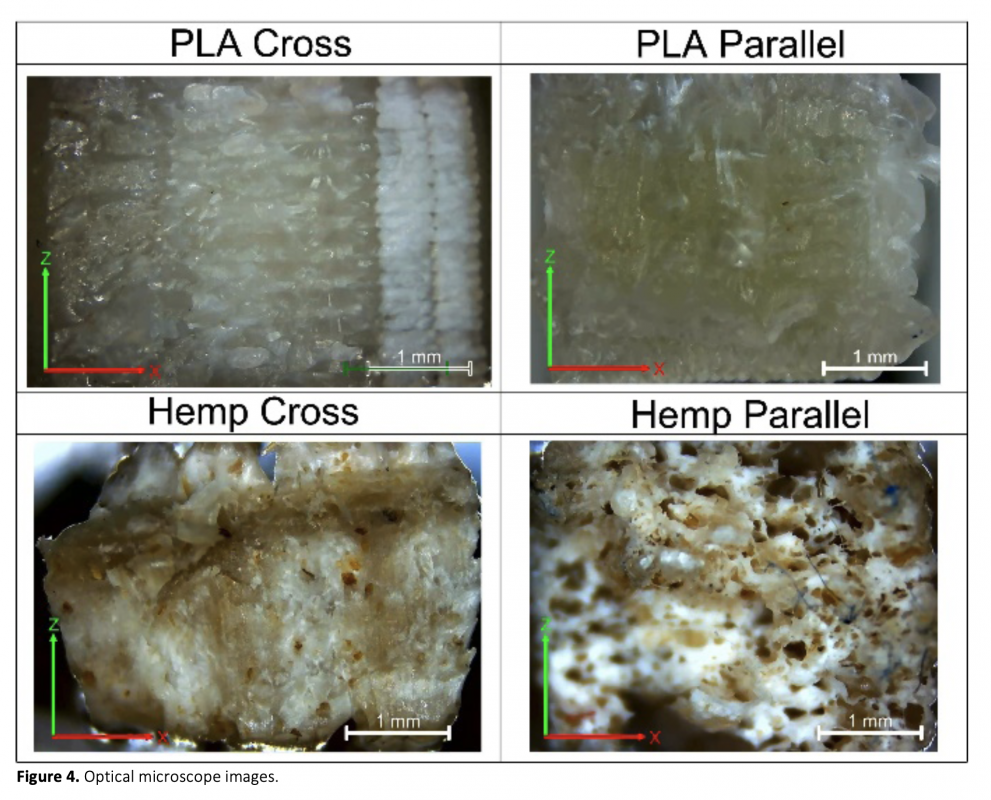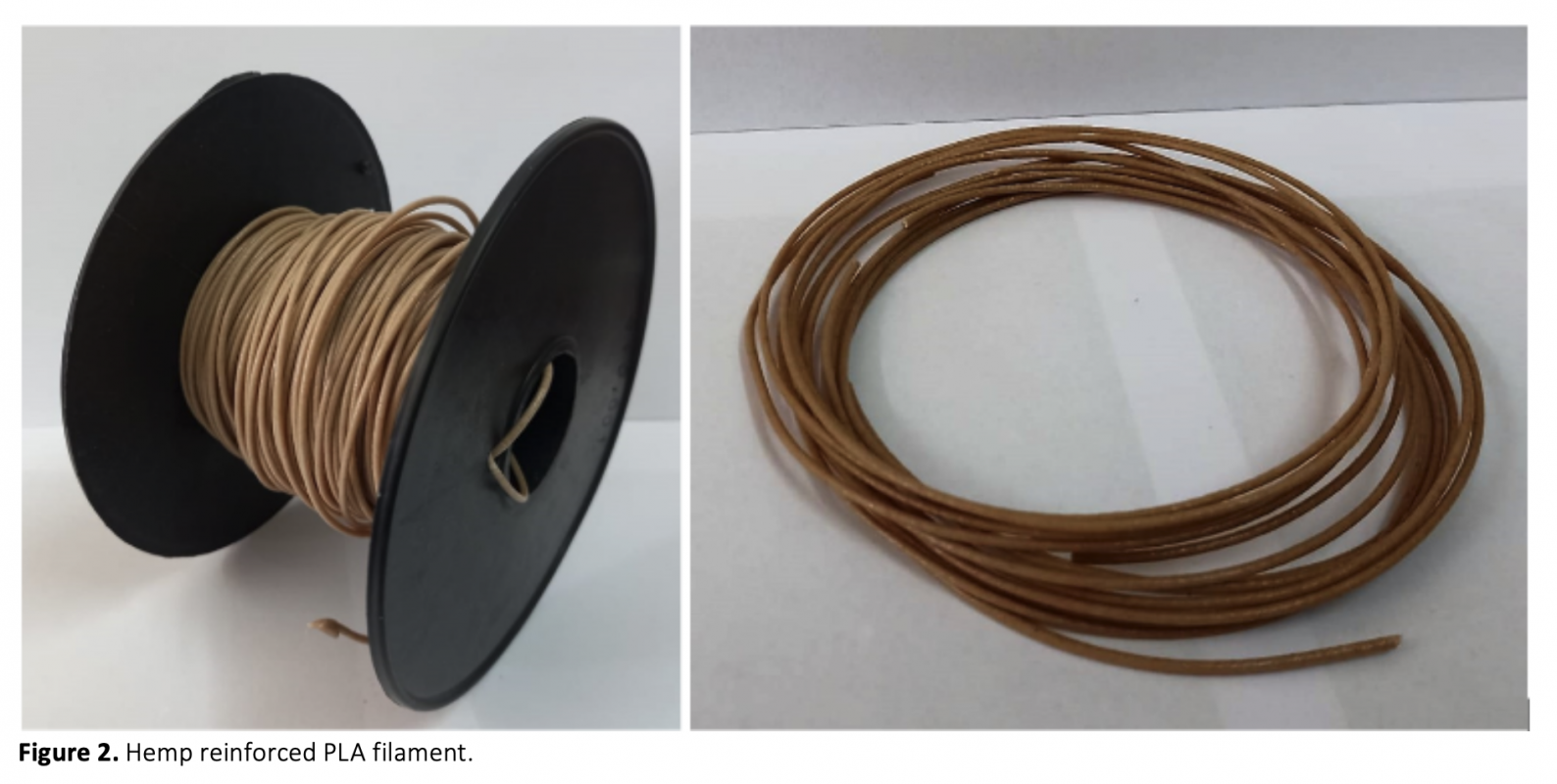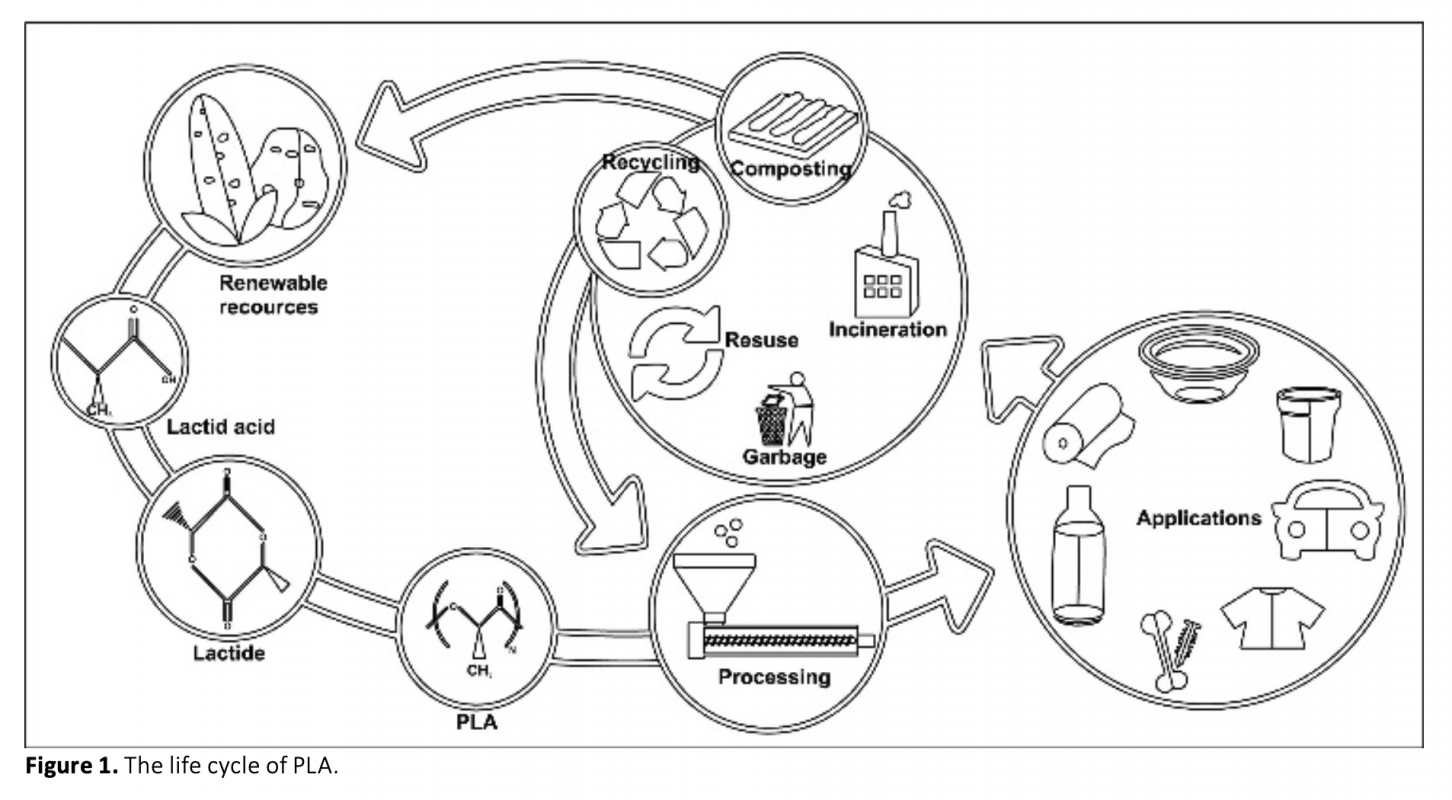Reinforcement of polymer matrix with natural fiber can provide an increase in mechanical properties of the related com- posite. Since thermoplastics, especially biocomposite materials are recyclable, they contribute to a sustainable ecosystem. In this study, 10% by weight hemp reinforced polylactic acid (PLA) matrix compounds were produced. Tensile test specimens were performed in two different infill patterns, parallel and +/- 45° cross, using the Fused Filament Fabrication (FFF) method from the developed biocomposite filaments. Ultimate tensile stress increases approximately 20%. It has been observed that the geometry of the infill pattern greatly affects the tensile strength. In addition, through optical and scanning electron microscopy (SEM) the produced composite filaments were examined. Surface interactions and homogeneous fiber distribution between PLA and hemp were investigated. As a result, hemp was used as a reinforcement material in the study. Homogeneous distribution is very important in the preparation of the compounds and a twin-screw extruder was used to achieve this. However, it has been observed that the interface between fiber and matrix is insufficient. This situation negatively affects structural performance. On the other hand, the addition of hemp decreases the thermal resistance and melting temperature and increases the glass transition temperature compared to pure PLA.
Polimer matrislerin doğal elyaflar ile güçlendirilmesi mekanik özelliklerde artış sağlayabilir. Termoplastikler, özellikle biyo- kompozit malzemeler geri dönüştürülebilir olduğundan sürdürülebilir bir ekosisteme katkıda bulunurlar. Kenevir lifleri öğütülmüş ve boyutları küçültülmüştür. Bu çalışmada ağırlıkça %10 kenevir takviyeli polilaktik asit (PLA) matrisli hammadde geliştirilmiştir. Geliştirilen biyokompozit hammaddeden eriyik birleştirme yöntemi (FFF) kullanılarak iki farklı dolgu geometrisinde çekme numuneleri üretilmiş ve mekanik performansları araştırılmıştır. En yüksek çekme dayanımı ortalama %20 artış göstermiştir. Üretilen numuneler optik ve yüzey elektron mikroskobu (SEM) ile incelenmiştir. Ara yüzey etkileşimleri ve fiberlerin homojen olarak dağılması oldukça önemli olup, araştırılmıştır. Sonuç olarak çalışmada kenevir takviye malzemesi olarak kullanılmıştır. Bileşimlerin hazırlanmasında homojen dağılım çok önemlidir ve bunu sağlamak için çift vidalı ekstrüder kullanılmıştır. Ancak buna rağmen fiber ve matris arasındaki ara yüzeyin yetersiz olduğu gözlemlenmiştir. Bu durum yapısal performansı olumsuz etkiler. Öte yandan, kenevir ilavesi, saf PLA'ya kıyasla termal direnci ve erime sıcaklığını düşürür ve cam geçiş sıcaklığını arttırır.




Download Article in PDF (2.2 MB)